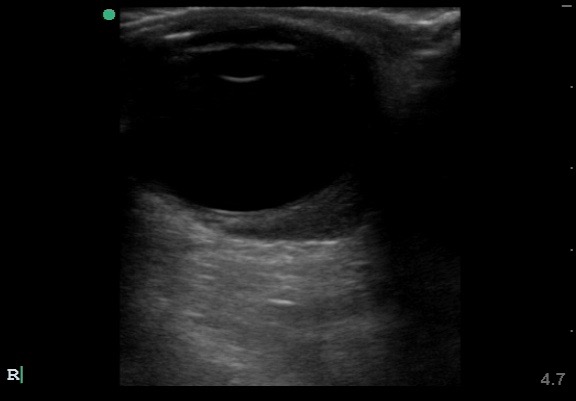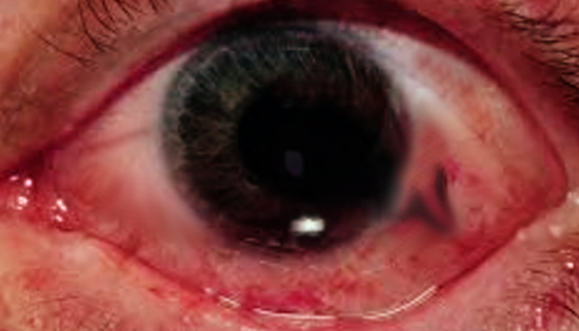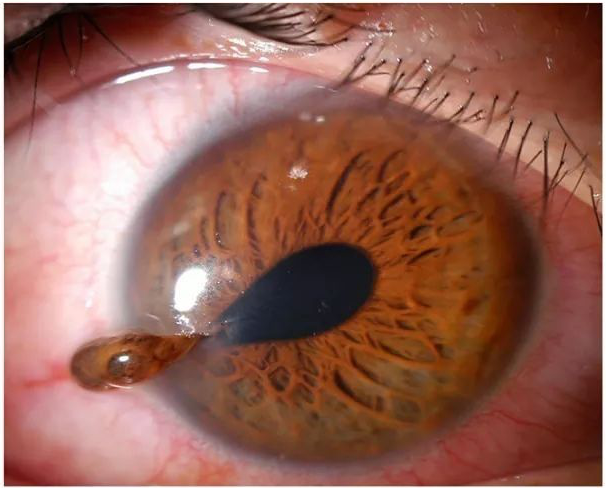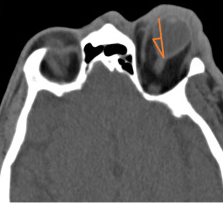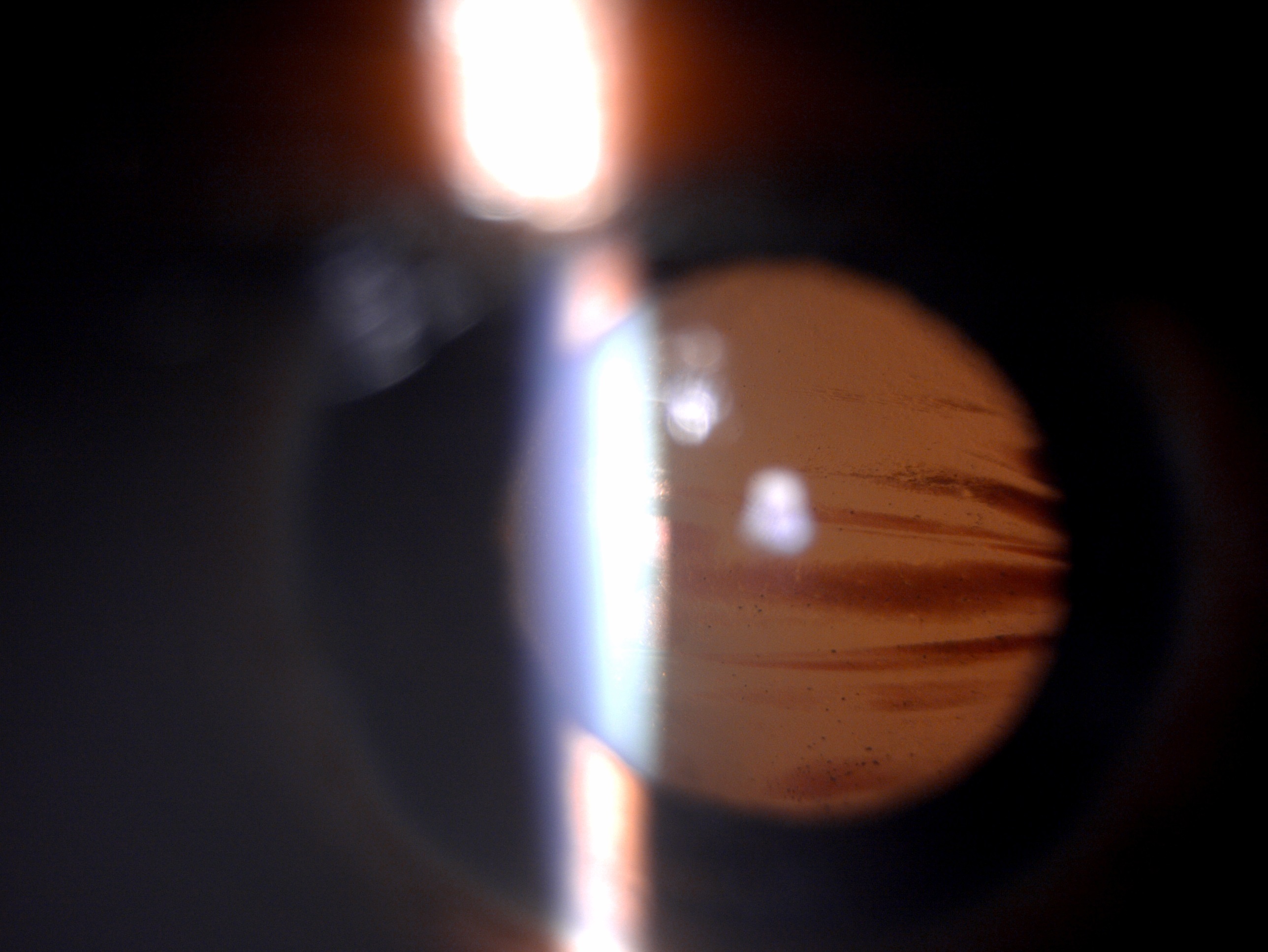[1]
Scott R. The injured eye. Philosophical transactions of the Royal Society of London. Series B, Biological sciences. 2011 Jan 27:366(1562):251-60. doi: 10.1098/rstb.2010.0234. Epub
[PubMed PMID: 21149360]
[3]
Al-Thowaibi A,Kumar M,Al-Matani I, An overview of penetrating ocular trauma with retained intraocular foreign body. Saudi journal of ophthalmology : official journal of the Saudi Ophthalmological Society. 2011 Apr
[PubMed PMID: 23960924]
Level 3 (low-level) evidence
[4]
Rajsic S,Breitkopf R,Bachler M,Treml B, Diagnostic Modalities in Critical Care: Point-of-Care Approach. Diagnostics (Basel, Switzerland). 2021 Nov 25;
[PubMed PMID: 34943438]
[5]
Jung HC,Lee SY,Yoon CK,Park UC,Heo JW,Lee EK, Intraocular Foreign Body: Diagnostic Protocols and Treatment Strategies in Ocular Trauma Patients. Journal of clinical medicine. 2021 Apr 25
[PubMed PMID: 33923011]
[6]
Kumar K, Figurasin R, Kumar S, Waseem M. An Uncommon Meridional Globe Rupture due to Blunt Eye Trauma. Case reports in emergency medicine. 2018:2018():1808509. doi: 10.1155/2018/1808509. Epub 2018 Sep 18
[PubMed PMID: 30319823]
Level 3 (low-level) evidence
[7]
Kurien NA,Peter J,Jacob P, Spectrum of Ocular Injuries and Visual Outcome Following Firework Injury to the Eye. Journal of emergencies, trauma, and shock. 2020 Jan-Mar
[PubMed PMID: 32395048]
[8]
Scheufele TA,Blomquist PH, spectrum of ocular trauma at an urban county hospital. Texas medicine. 2004 Dec
[PubMed PMID: 15685908]
[9]
Ababneh LT, Mohidat H, Abdelnabi H, Kana'an MF, Tashtush NA, El-Mulki OS, Aleshawi AJ. Hospital-Based Ocular Trauma: Factors, Treatment, And Impact Outcome. Clinical ophthalmology (Auckland, N.Z.). 2019:13():2119-2126. doi: 10.2147/OPTH.S223379. Epub 2019 Oct 31
[PubMed PMID: 31802841]
[10]
Haavisto AK,Sahraravand A,Puska P,Leivo T, Toy gun eye injuries - eye protection needed Helsinki ocular trauma study. Acta ophthalmologica. 2018 Nov 2
[PubMed PMID: 30390370]
[11]
Jolly R,Arjunan M,Theodorou M,Dahlmann-Noor AH, Eye injuries in children - incidence and outcomes: An observational study at a dedicated children's eye casualty. European journal of ophthalmology. 2019 Sep
[PubMed PMID: 30270661]
Level 2 (mid-level) evidence
[12]
Sen E,Celik S,Inanc M,Elgin U,Ozyurt B,Yılmazbas P, Seasonal distribution of ocular conditions treated at the emergency room: a 1-year prospective study. Arquivos brasileiros de oftalmologia. 2018 Apr
[PubMed PMID: 29846426]
[13]
Puodžiuvienė E,Jokūbauskienė G,Vieversytė M,Asselineau K, A five-year retrospective study of the epidemiological characteristics and visual outcomes of pediatric ocular trauma. BMC ophthalmology. 2018 Jan 18
[PubMed PMID: 29347941]
Level 2 (mid-level) evidence
[15]
Vingopoulos F,Wang Y,Grob S,Li CYL,Eliott D,Kim LA,Vavvas DG,Miller JB, Open Globe Injury with Intraocular Foreign Body. Journal of vitreoretinal diseases. 2021 Jul 1;
[PubMed PMID: 34386688]
[16]
Maurya RP,Srivastav T,Singh VP,Mishra CP,Al-Mujaini A, The epidemiology of ocular trauma in Northern India: A teaching hospital study. Oman journal of ophthalmology. 2019 May-Aug
[PubMed PMID: 31198291]
[17]
Keel S,Xie J,Foreman J,Taylor HR,Dirani M, The prevalence of vision loss due to ocular trauma in the Australian National Eye Health Survey. Injury. 2017 Nov
[PubMed PMID: 28964509]
Level 3 (low-level) evidence
[18]
Négrel AD, Thylefors B. The global impact of eye injuries. Ophthalmic epidemiology. 1998 Sep:5(3):143-69
[PubMed PMID: 9805347]
[19]
Aghadoost D. Ocular trauma: an overview. Archives of trauma research. 2014 Jun:3(2):e21639. doi: 10.5812/atr.21639. Epub 2014 Jun 29
[PubMed PMID: 25147781]
Level 3 (low-level) evidence
[20]
Bi H,Cui Y,Li Y,Wang X,Zhang J, Clinical characteristics and surgical problems of ruptured globe injury. Current therapeutic research, clinical and experimental. 2013 Jun;
[PubMed PMID: 24385006]
[21]
Kopecky A,Rokohl AC,Nemcansky J,Koch KR,Matousek P,Heindl LM, [Retrobulbar Haematoma - a Complication that May Impair Vision]. Klinische Monatsblatter fur Augenheilkunde. 2021 May
[PubMed PMID: 31416097]
[22]
Wangsathaporn K,Tsui I, Commotio Retinae Resulting From Rubber Band Injury in Two Girls. Ophthalmic surgery, lasers & imaging retina. 2019 May 1
[PubMed PMID: 31100162]
[23]
Lucke-Wold BP,Phillips M,Turner RC,Logsdon AF,Smith KE,Huber JD,Rosen CL,Regele JD, Elucidating the role of compression waves and impact duration for generating mild traumatic brain injury in rats. Brain injury. 2017;
[PubMed PMID: 27880054]
[24]
Burstein ES,Lazzaro DR, Traumatic ruptured globe eye injuries in a large urban center. Clinical ophthalmology (Auckland, N.Z.). 2013
[PubMed PMID: 23493627]
[25]
Friehmann A,Peled A,Ela-Dalman N,Nemet AY, Isolated Superior Rectus Muscle Hematoma Following Blunt Orbital Trauma. The Journal of craniofacial surgery. 2019 Mar/Apr
[PubMed PMID: 30531284]
[26]
Vukovic AA,Poole MD,Hoehn EF,Caldwell AK,Schondelmeyer AC, Things Are Not Always What They Seem: Two Cases of Child Maltreatment Presenting With Common Pediatric Chief Complaints. Pediatric emergency care. 2019 Jun
[PubMed PMID: 30489490]
Level 3 (low-level) evidence
[27]
Court JH,Lu LM,Wang N,McGhee CNJ, Visual and ocular morbidity in severe open-globe injuries presenting to a regional eye centre in New Zealand. Clinical & experimental ophthalmology. 2019 May
[PubMed PMID: 30414237]
[29]
Vaidyanathan U, Hopping GC, Liu HY, Somani AN, Ronquillo YC, Hoopes PC, Moshirfar M. Persistent Corneal Epithelial Defects: A Review Article. Medical hypothesis, discovery & innovation ophthalmology journal. 2019 Fall:8(3):163-176
[PubMed PMID: 31598519]
[30]
Costagliola C,Romano V,Forbice E,Angi M,Pascotto A,Boccia T,Semeraro F, Corneal oedema and its medical treatment. Clinical & experimental optometry. 2013 Nov
[PubMed PMID: 23679934]
[31]
Chow VW,Agarwal T,Vajpayee RB,Jhanji V, Update on diagnosis and management of Descemet's membrane detachment. Current opinion in ophthalmology. 2013 Jul;
[PubMed PMID: 23665525]
Level 3 (low-level) evidence
[32]
Miller DD, Hasan SA, Simmons NL, Stewart MW. Recurrent corneal erosion: a comprehensive review. Clinical ophthalmology (Auckland, N.Z.). 2019:13():325-335. doi: 10.2147/OPTH.S157430. Epub 2019 Feb 11
[PubMed PMID: 30809089]
[33]
Barot RK,Karkhanis A,Shitole SC, An Unusual Traumatic Lamellar Laceration of Cornea. Journal of clinical and diagnostic research : JCDR. 2015 Jun;
[PubMed PMID: 26266144]
[34]
Krauthammer M,Mandelblum J,Spierer O, Corneal Blood Staining after Complicated Cataract Surgery. Case reports in ophthalmology. 2018 Sep-Dec
[PubMed PMID: 30323760]
Level 3 (low-level) evidence
[35]
Wilson SL,El Haj AJ,Yang Y, Control of scar tissue formation in the cornea: strategies in clinical and corneal tissue engineering. Journal of functional biomaterials. 2012 Sep 18
[PubMed PMID: 24955637]
[36]
Jansen ME,Situ P,Begley CG,Boree D,Chalmers RL,Osborn Lorenz K,Wilson T, Characterizing Contact Lens-Related Corneal Infiltrates: A Pilot Study. Cornea. 2016 Dec;
[PubMed PMID: 27560033]
Level 3 (low-level) evidence
[38]
Walton W,Von Hagen S,Grigorian R,Zarbin M, Management of traumatic hyphema. Survey of ophthalmology. 2002 Jul-Aug
[PubMed PMID: 12161209]
Level 3 (low-level) evidence
[39]
Agrawal RV, Murthy S, Sangwan V, Biswas J. Current approach in diagnosis and management of anterior uveitis. Indian journal of ophthalmology. 2010 Jan-Feb:58(1):11-9. doi: 10.4103/0301-4738.58468. Epub
[PubMed PMID: 20029142]
[40]
Balamurugan R,Gupta PC,Sharma VK,Khurana S,Ram J, Alternate iris bypass technique of iridodialysis repair. Indian journal of ophthalmology. 2020 Jun
[PubMed PMID: 32461449]
[41]
Mikropoulos DG,Kymionis GD,Grentzelos MA,Voulgari N,Katsanos A,Konstas AG, Combined Pupilloplasty and Retropupillary Iris-Claw Intraocular Lens Implantation with DSAEK in a Patient with Traumatic Iridoplegia, Aphakia and Corneal Decompensation. Ophthalmology and therapy. 2019 Sep
[PubMed PMID: 31317508]
[42]
Impallomeni M, Transient complete ptosis and miosis following trauma to the right eyeball in a rugby injury: where was the lesion? Journal of the Royal Society of Medicine. 1997 Nov
[PubMed PMID: 9496277]
[44]
Gupta VB,Rajagopala M,Ravishankar B, Etiopathogenesis of cataract: an appraisal. Indian journal of ophthalmology. 2014 Feb;
[PubMed PMID: 24618482]
[45]
Williams JC,Chambers JP,Liehr JG, Glutamyl ribose 5-phosphate storage disease. A hereditary defect in the degradation of poly(ADP-ribosylated) proteins. The Journal of biological chemistry. 1984 Jan 25
[PubMed PMID: 6693374]
[46]
Singh RB,Thakur S,Ichhpujani P, Traumatic rosette cataract. BMJ case reports. 2018 Nov 28
[PubMed PMID: 30567140]
Level 3 (low-level) evidence
[47]
Praveen MR,Vasavada AR,Singh R, Phacoemulsification in subluxated cataract. Indian journal of ophthalmology. 2003 Jun
[PubMed PMID: 12831145]
[48]
Mönestam EI, Incidence of dislocation of intraocular lenses and pseudophakodonesis 10 years after cataract surgery. Ophthalmology. 2009 Dec;
[PubMed PMID: 19815277]
[49]
Chen X,Yao Y,Wang F,Liu T,Zhao X, A retrospective study of eyeball rupture in patients with or without orbital fracture. Medicine. 2017 Jun;
[PubMed PMID: 28614230]
Level 2 (mid-level) evidence
[50]
Mackiewicz J,Tomaszewska J,Jasielska M, Optic nerve avulsion after blunt ocular trauma - Case report. Annals of agricultural and environmental medicine : AAEM. 2016 Jun 2
[PubMed PMID: 27294653]
Level 3 (low-level) evidence
[51]
Yu-Wai-Man P, Traumatic optic neuropathy-Clinical features and management issues. Taiwan journal of ophthalmology. 2015 Mar 1
[PubMed PMID: 26052483]
[52]
Spraul CW, Grossniklaus HE. Vitreous Hemorrhage. Survey of ophthalmology. 1997 Jul-Aug:42(1):3-39
[PubMed PMID: 9265701]
Level 3 (low-level) evidence
[53]
Johnson MW, Perifoveal vitreous detachment and its macular complications. Transactions of the American Ophthalmological Society. 2005;
[PubMed PMID: 17057817]
[54]
Ivanova T,Jalil A,Antoniou Y,Bishop PN,Vallejo-Garcia JL,Patton N, Vitrectomy for primary symptomatic vitreous opacities: an evidence-based review. Eye (London, England). 2016 May;
[PubMed PMID: 26939559]
[55]
Kim TY,Kang HG,Kim CY,Koh HJ,Kim SS,Kim M, Delayed vitreous prolapse after cataract surgery: clinical features and surgical outcomes. Scientific reports. 2021 Aug 9
[PubMed PMID: 34373536]
[56]
Moon K,Kim KS,Kim YC, A case of expansion of traumatic choroidal rupture with delayed-developed outer retinal changes. Case reports in ophthalmology. 2013
[PubMed PMID: 24019789]
Level 3 (low-level) evidence
[57]
Kuhn F,Morris R,Mester V, Choroidal detachment and expulsive choroidal hemorrhage. Ophthalmology clinics of North America. 2001 Dec
[PubMed PMID: 11787743]
[58]
Ludwig CA,Shields RA,Do DV,Moshfeghi DM,Mahajan VB, Traumatic chorioretinitis sclopetaria: Risk factors, management, and prognosis. American journal of ophthalmology case reports. 2019 Jun
[PubMed PMID: 30834355]
Level 3 (low-level) evidence
[59]
Park JY,Nam WH,Kim SH,Jang SY,Ohn YH,Park TK, Evaluation of the central macula in commotio retinae not associated with other types of traumatic retinopathy. Korean journal of ophthalmology : KJO. 2011 Aug
[PubMed PMID: 21860574]
[60]
Kwok JM,Yu CW,Christakis PG, Retinal detachment. CMAJ : Canadian Medical Association journal = journal de l'Association medicale canadienne. 2020 Mar 23
[PubMed PMID: 32392514]
[61]
Idrees S, Sridhar J, Kuriyan AE. Proliferative Vitreoretinopathy: A Review. International ophthalmology clinics. 2019 Winter:59(1):221-240. doi: 10.1097/IIO.0000000000000258. Epub
[PubMed PMID: 30585928]
[63]
Tranos PG, Wickremasinghe SS, Stangos NT, Topouzis F, Tsinopoulos I, Pavesio CE. Macular edema. Survey of ophthalmology. 2004 Sep-Oct:49(5):470-90
[PubMed PMID: 15325193]
Level 3 (low-level) evidence
[64]
Bae K,Cho K,Kang SW,Kim SJ,Kim JM, Peripheral Reticular Pigmentary Degeneration and Choroidal Vascular Insufficiency, Studied by Ultra Wide-Field Fluorescein Angiography. PloS one. 2017
[PubMed PMID: 28114409]
[65]
Bikbova G,Oshitari T,Baba T,Yamamoto S,Mori K, Pathogenesis and Management of Macular Hole: Review of Current Advances. Journal of ophthalmology. 2019
[PubMed PMID: 31191994]
Level 3 (low-level) evidence
[66]
Yalçın NG,Özdek Ş, The Relationship Between Macular Cyst Formation and Ischemia in Diabetic Macular Edema Turkish journal of ophthalmology. 2019 Sep 3;
[PubMed PMID: 31486606]
[67]
Kolomeyer AM,Szirth BC,Nayak NV,Khouri AS, Complimentary imaging technologies in blunt ocular trauma. Oman journal of ophthalmology. 2013 May
[PubMed PMID: 24082670]
[68]
Kim JJ,Moon JH,Jeong HS,Chi M, Has decreased visual acuity associated with blunt trauma at the emergency department recovered? The Journal of craniofacial surgery. 2012 May
[PubMed PMID: 22565865]
[69]
Ding C, Zeng J. Clinical study on Hypotony following blunt ocular trauma. International journal of ophthalmology. 2012:5(6):771-3. doi: 10.3980/j.issn.2222-3959.2012.06.21. Epub 2012 Dec 18
[PubMed PMID: 23275915]
[72]
Lin KY, Ngai P, Echegoyen JC, Tao JP. Imaging in orbital trauma. Saudi journal of ophthalmology : official journal of the Saudi Ophthalmological Society. 2012 Oct:26(4):427-32. doi: 10.1016/j.sjopt.2012.08.002. Epub
[PubMed PMID: 23961028]
[73]
Nemet AY,Asalee L,Lang Y,Briscoe D,Assia EI, Ocular Paintball Injuries. The Israel Medical Association journal : IMAJ. 2016 Jan
[PubMed PMID: 26964276]
[74]
Hoskin AK,Yardley AM,Hanman K,Lam G,Mackey DA, Sports-related eye and adnexal injuries in the Western Australian paediatric population. Acta ophthalmologica. 2016 Sep
[PubMed PMID: 26647756]
[76]
Zungu T,Mdala S,Manda C,Twabi HS,Kayange P, Characteristics and visual outcome of ocular trauma patients at Queen Elizabeth Central Hospital in Malawi. PloS one. 2021
[PubMed PMID: 33780448]
[77]
Ram J,Verma N,Gupta N,Chaudhary M, Effect of penetrating and blunt ocular trauma on the outcome of traumatic cataract in children in northern India. The journal of trauma and acute care surgery. 2012 Sep
[PubMed PMID: 22929502]
[78]
Rahman I,Maino A,Devadason D,Leatherbarrow B, Open globe injuries: factors predictive of poor outcome. Eye (London, England). 2006 Dec
[PubMed PMID: 16179934]
[79]
Quality assurance in dentistry: executive summary, part 1. ADA Quality Assurance Project., Stern SK,Morrissey SC,Mauldin J,, Journal of the American Dental Association (1939), 1979 Jan
[PubMed PMID: 23618228]
Level 2 (mid-level) evidence
[81]
Kuhn F,Maisiak R,Mann L,Mester V,Morris R,Witherspoon CD, The Ocular Trauma Score (OTS). Ophthalmology clinics of North America. 2002 Jun
[PubMed PMID: 12229231]
[82]
Irawati Y,Soedarman S,Arianti A,Widyasari A,Reksodiputro MH, Multiple Approaches for Managing Complex Ophthalmic Blunt Trauma: A Case Report. International medical case reports journal. 2021
[PubMed PMID: 33833590]
Level 3 (low-level) evidence
[83]
Thomas R,McManus JG,Johnson A,Mayer P,Wade C,Holcomb JB, Ocular injury reduction from ocular protection use in current combat operations. The Journal of trauma. 2009 Apr
[PubMed PMID: 19359977]
[84]
Desai P,MacEwen CJ,Baines P,Minassian DC, Incidence of cases of ocular trauma admitted to hospital and incidence of blinding outcome. The British journal of ophthalmology. 1996 Jul
[PubMed PMID: 8795369]
Level 3 (low-level) evidence

